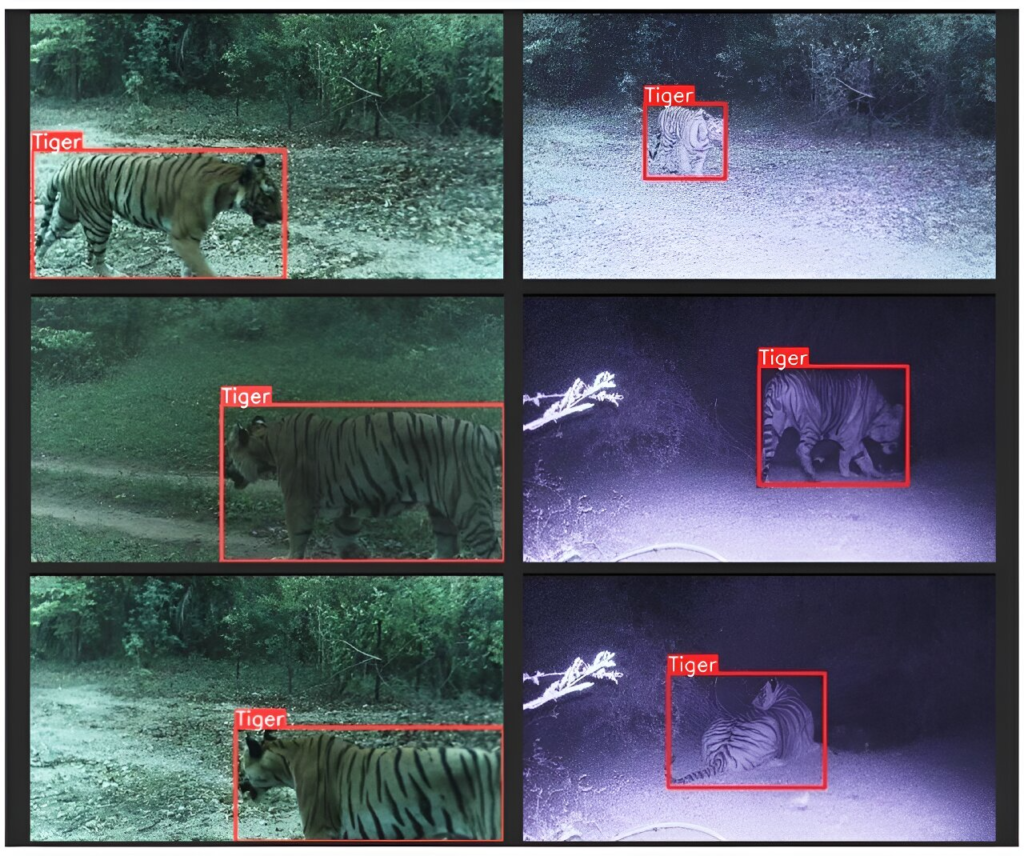
With Earth Engine TCL 3.0, NASA and Google are transforming satellite space technology for tiger conservation, offering real-time monitoring and hope for these magnificent cats’ future.
February 29, 2024, 10 a.m. ET in New York has a unique combination of space technology and field data collection. Scientists are using NASA satellite imagery and Google Earth Engine computer power. To assist in the development of a global real-time tiger habitat monitoring system. The third iteration of tiger habitat assessment in Asia, known as “TCL 3.0,”. Focuses on the remaining separate continuous tracts of habitat where tigers still occur. These are known as Tiger Conservation Landscapes, or TCLs. This methodology constitutes a significant advancement in the assessment and tracking of habitat alterations by scientists. It offers a structure for tracking various wildlife species worldwide.
Tiger habitat loss: a growing threat
The loss of habitat is one of the main issues affecting tiger populations. Because these magnificent cats live in some of the planet’s most fragile environments. They are especially vulnerable to the damaging effects of deforestation and human expansion. Consequently, tigers are now considerably more vulnerable as. The whole area of Tiger Conservation Landscapes (TCL) has shrunk by 11% between 2001 and 2020.
TCL 3.0: space technology A Beacon of Hope
In the midst of this problem, a creative project to continuously monitor and safeguard tiger habitats has surfaced. TCL 3.0 has been released by NASA in association with Google Earth Engine and over thirty research partners. With the use of cutting-edge computer processing and satellite imaging, this ground-breaking program is able to follow changes in tiger ecosystems more effectively than ever before.
The Power of Data
Tigers should be allowed to roam freely in regions known as Tiger Conservation Landscapes, or TCLs.
Apart from providing habitat for tigers, these landscapes are the biodiversity of millions of people.
And are essential for carbon sequestration, and access to ecosystem services.
TCL 3.0 provides a thorough understanding of these environments, enabling conservationists to recognize dangers and respond quickly.
Real-Time Monitoring for a Lasting Impact
TCL 3.0’s primary objective, according to Eric W. The goal of Sanderson, the New York Botanical Garden’s vice president of Urban Conservation, is to maintain tiger populations over their whole range. This technology facilitates swift and efficient responses by enabling environmentalists and policymakers. To detect habitat loss in real time with its near real-time tools.
Space Technology Meets Conservation
The aerial picture of tiger habitats provided by NASA satellite photographs, including VIIRS, MODIS, and Landsat products, is a rare combination of space technology and conservation research. Because of our collaboration with Google Earth Engine, land managers are better equipped to safeguard these vital ecosystems.
A call to action in space technology
The latest study’s authors emphasize a straightforward but impactful point: conservation is effective when we choose to give it top priority. Our efforts to protect tiger habitats, stop poaching, and stop the illegal wildlife trade will help to guarantee a better future for these magnificent animals.
Collaboration is Key
Associate director of the WCS Tiger program Dale Miquelle emphasizes the value of cooperation between governments, scientific institutions, and non-governmental organizations. The group’s commitment to save tigers and their habitats is essential to TCL 3.0’s success.
Hope on the Horizon
For the last tigers in the world, TCL 3.0 is a beacon of hope. This ground-breaking platform provides a lifeline for these endangered species.
As developed with the help of experts and supported by the latest technology. Let us keep in mind that we have the power to determine the fate of tigers as we look to the future. We can guarantee. That these magnificent cats will be able to roam the wild for many more generations by combining coordinated conservation efforts with the strength of data-driven solutions.
The researchers stated that “the key is to monitor progress at a rate relevant to decision-making.” Let’s respond to this call to action and take up the cause of preserving our tigers. As they say, “Every tiger counts!” after all.
